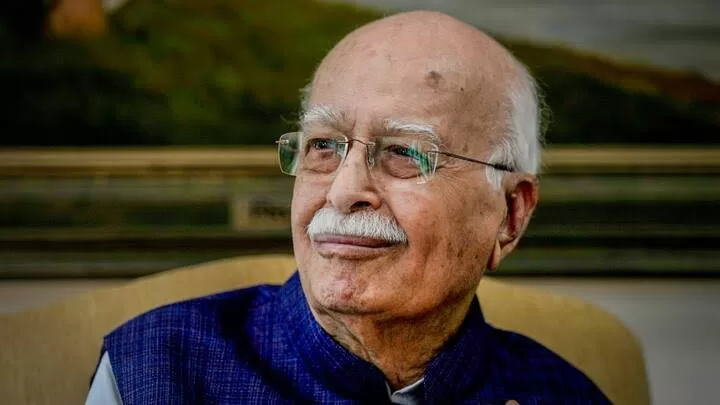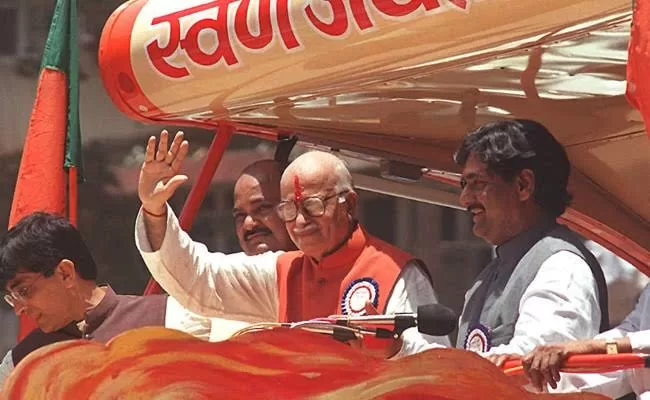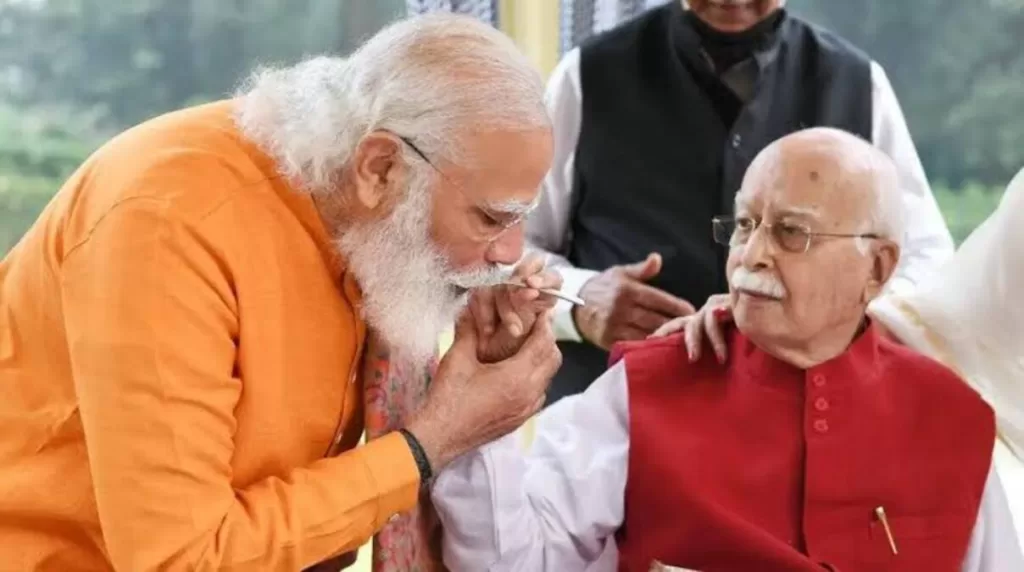On February 3, Prime Minister Narendra Modi announced that L K Advani, a veteran BJP leader, would be conferred with the Bharat Ratna, which is India’s highest civilian honour.
PM Modi shared the news on his social media account and praised Advani for his monumental contribution to the development of India. Advani played a crucial role in transforming the Bharatiya Janata Party into a national political force in the late 1980s and early 1990s.

The BJP emerged in 1980 after the Janata Party dissolved. In its first national conference, party president Atal Bihari Vajpayee underscored that the BJP was not a new incarnation of Syama Prasad Mookerjee’s Bharatiya Jana Sangh.
Instead, Vajpayee claimed the legacy of Jayprakash Narayan and declared Gandhian Socialism to be the party’s foundational ideology.
However, this position didn’t turn out to be fruitful in the 1984 general elections. The Rajiv Gandhi-led Congress won over 400 seats, while the BJP won only two. Advani took over the party’s reins and guided it towards a new direction.
In the 1980s, Hindu nationalist organisations like the Vishwa Hindu Parishad upped the ante on the Ram temple issue. While the earliest proposal to build a Ram temple in Ayodhya came up in the 19th century, the 1980s saw the movement gather momentum.
The BJP, under Vajpayee, had been somewhat sceptical about openly wading into the matter. But Advani sensed that the growing Ram temple agitation offered a unique opportunity to consolidate the Hindu vote.
In 1989, the party officially took on the Ram Janmabhoomi cause in its historic Palampur Resolution.

Advani felt that even greater inroads needed to be made, and in 1990, he launched the Rath Yatra from Somnath, Gujarat. He planned to traverse the country on a rath to build momentum for the Ram Janmabhoomi movement and ultimately arrive at Ayodhya to stake claim to the Babri Masjid site.
Advani’s Yatra was marked by songs and slogans, all with a singular aim to galvanise pan-Hindu support for the temple. As he travelled through the country, Advani’s Yatra left a trail of violence in its wake, with communal violence intensifying, especially after Advani’s arrest in Bihar, on the orders of Chief Minister Lalu Prasad Yadav.
Despite this, the Rath Yatra was a success for Advani and the BJP. In the 1991 elections, the BJP emerged as the second largest party in the Parliament, after the Congress, and raised its tally to 120 seats. It also formed the government in Uttar Pradesh.

On December 6, 1992, around 100,000 kar sevaks descended upon the Babri Masjid and razed it to the ground. Advani was in Ayodhya that day but was not prepared for what happened. He said that the events of December 6 “bothered him”.

